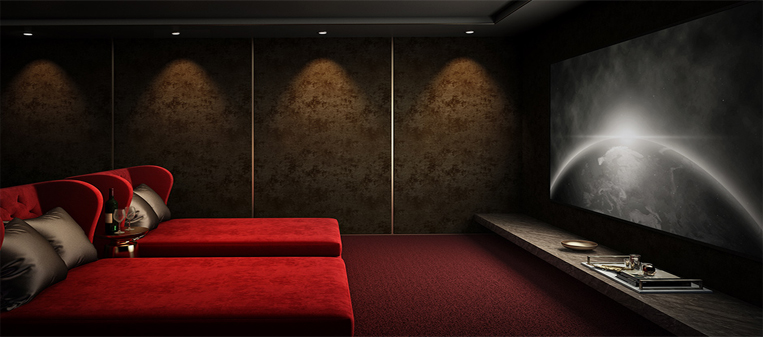In the world of home entertainment, there’s nothing quite like the immersive experience of a well-designed home theater. A captivating movie or thrilling gaming session becomes truly memorable when complemented by high-quality audio that envelopes the audience in a symphony of sound. This is where the expertise of an acoustic designer for home theaters comes into play. These professionals possess a unique set of skills that combine architectural knowledge with acoustical engineering to create a harmonious blend of aesthetics and optimal sound performance.
Acoustic designer for home theater
I. Understanding the Role of an Acoustic Designer for Home Theater
A. What does an acoustic designer do?
B. The importance of acoustic design in a home theater setup
C. Balancing aesthetics with acoustic performance
II. Key Considerations in Home Theater Acoustic Design
A. Room size and shape: Impact on sound propagation
B. Wall materials and treatments: Minimizing sound reflections and echoes
C. Speaker placement: Optimizing audio distribution
D. Seating arrangement: Enhancing the listening experience
III. Tailoring Audio Solutions to Individual Preferences
A. Customizing audio systems for different types of media (movies, music, gaming)
B. Addressing specific acoustic challenges in unique room layouts
C. Incorporating advanced technologies like surround sound and Dolby Atmos
IV. Collaboration with Architects and Interior Designers
A. Integrating acoustic design seamlessly into the overall home layout
B. Ensuring harmony between the home theater and surrounding spaces
C. Selecting acoustically-friendly building materials and décor elements
V. Enhancing Acoustics through Soundproofing and Isolation
A. Preventing sound leakage to other parts of the house
B. Soundproofing techniques for a disturbance-free experience
C. Isolating the room from external noises for optimum audio clarity
VI. Fine-Tuning and Calibration for Optimal Performance
A. Measuring and analyzing acoustic characteristics
B. Adjusting audio systems for a balanced frequency response
C. Achieving the desired sound dynamics and clarity
VII. The Evolving Landscape of Home Theater Audio
A. Keeping up with the latest audio technologies and trends
B. Future-proofing the home theater through scalable acoustic design
An acoustic designer for home theaters plays a pivotal role in shaping the audio experience within the comfort of one’s residence. By combining artistic vision with technical expertise, these professionals transform ordinary rooms into extraordinary spaces where sound comes to life. Whether it’s a cozy media room or a dedicated home theater, their work ensures that every moment of entertainment becomes an enchanting and unforgettable journey into the world of sound.

